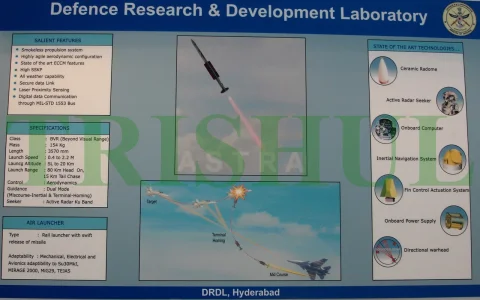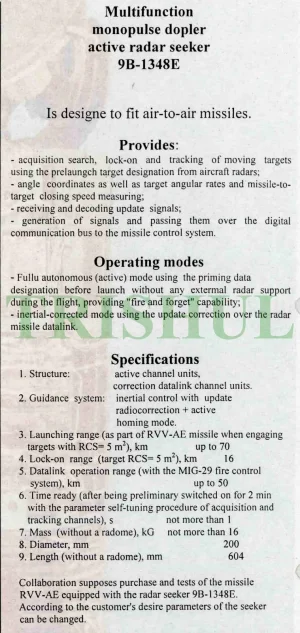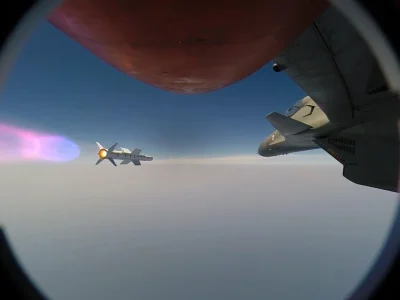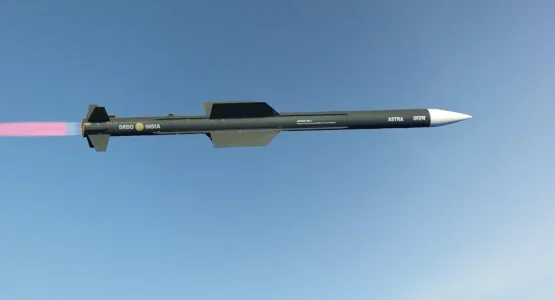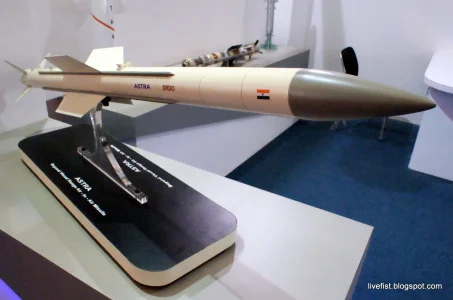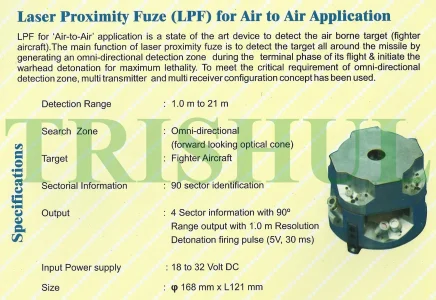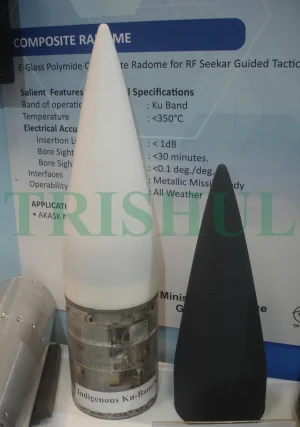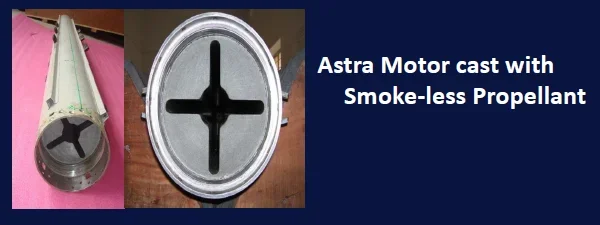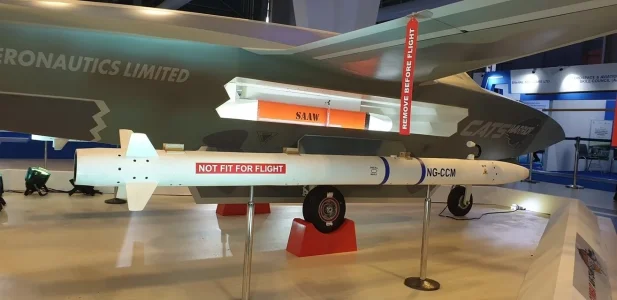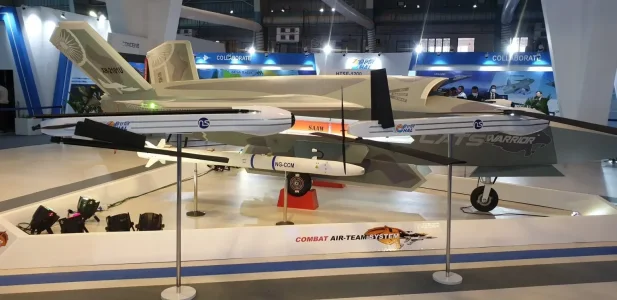- Joined
- Jul 1, 2024
- Messages
- 1,894
- Likes
- 10,148
This thread is for India's Air to Air : Astra missile program.
TIMELINE:
Nov-2009: First captive trials

 www.thehindu.com
www.thehindu.com
Jan-2010: First test fire
 6Jul-2010: Test fire
6Jul-2010: Test fire

 www.ndtv.com
www.ndtv.com
7Jul-2010: Astra test fired for second consecutive day

 www.thehindu.com
www.thehindu.com

This file photo shows the replica of the Astra air-to-air missile (foreground) at the Defence Research and Development Laboratory, Hyderabad. Astra was successfully test-fired for the second consecutive day at Chandipur in Orissa on Wednesday.
TIMELINE:
Nov-2009: First captive trials

Captive flight trials of Astra missile carried out
Technology News:Captive flight trials of Astra missile carried out
The Hindu LogoHamberMenu
HOME
SCI-TECH
TECHNOLOGY
Captive flight trials of Astra missile carried out
Updated - November 17, 2021 06:44 am IST
Published - November 01, 2009 12:06 am IST - BANGALORE
RAVI SHARMA
India’s missile programme took a crucial step forward on Saturday with Indian Air Force test pilots carrying out the captive flight trials of the indigenously designed and developed Astra beyond visual range air-to-air missile (BVRAAM).
A Su-30MKI combat aircraft especially tasked for the trials took off from Air Force Station Lohegaon (Pune) for a 90-minute sortie with the Astra missile. Till Thursday, four sorties, including flying the missile to super sonic speeds and to 7Gs, had been accomplished. Captive trials are mandatory to actual firing of the missile from the aircraft.
The active, radar homing Astra -- India’s first air-to-air missile -- which, at its design altitude of 15 km, will enable fighter pilots to lock-on, evade radar and shoot down enemy aircraft about 80 km away, is part of India’s Integrated Guided Missile Development Programme and has been under development at a number of defence laboratories led by the Hyderabad-based Defence Research and Development Laboratory.
Astra can be compared to the U.S.’ AIM-120 Advanced Medium-Range Air-to-Air Missile, or AMRAAM, France’s MICA (Missile d’interception et de combat aérien, “Interception and Aerial Combat Missile”) and Russia’s R77 (RVV-AE) missile.
The ground launch of Astra was successfully conducted at Chandipur-on-Sea, off the Orissa coast in September 2008.
Captive flight trials involve the Su-30MKI carrying under its wings at one of its six hard points (stations designated for the carrying of stores) an inert missile (with no explosives but simulating the real missile) which has not been electrically or electronically ‘connected’ to the aircraft’s on-board systems.
Captive or aero mechanical integrity tests allows a verification of aspects such as the mechanical, structural and electrical compatibility between the missile and the aircraft, and whether vibrations, strain, stress, etc. are within design levels.
Only after the missile is proven in captive flight trials can it be fired from an aircraft.
Disclosing news of Phase 1 of the captive flight trails which have come after about four years of planning and certification, senior officials said the trials would cover the entire flight envelope of the Su-30MKI, including attaining the fighter’s altitude ceiling of 18 km and a speed of 1.8 Mach, and undertaking the various complicated manoeuvres that the aircraft is designed for. The trials are likely to involve around 15 sorties.
Russian launcher
Though the missile has been indigenously developed, Astra currently depends on a Russian launcher and seeker head. The seeker is yet to be integrated with the missile’s radar, algorithms, etc.
Officials said Astra has been designed to pull a latax (lateral acceleration) of 40g. (40 times the acceleration due to gravity).
The second phase of the trials -- avionics integrity tests -- are expected early next year and will involve the integration of the missile’s avionics with that of the aircraft, and a dialoguing between the cockpit and the missile. Officials also disclosed that “some guided flights with a seeker to check for guidance will take place early next year.” The actual firing of Astra from the Su-30MKI is expected in July-August 2010.
Astra is to be initially fitted on the Su-30MKI and the Mirage 2000, with the Tejas Light Combat Aircraft and the MiG-29 scheduled to be equipped with it later.
HOME
SCI-TECH
TECHNOLOGY
Captive flight trials of Astra missile carried out
Updated - November 17, 2021 06:44 am IST
Published - November 01, 2009 12:06 am IST - BANGALORE
RAVI SHARMA
India’s missile programme took a crucial step forward on Saturday with Indian Air Force test pilots carrying out the captive flight trials of the indigenously designed and developed Astra beyond visual range air-to-air missile (BVRAAM).
A Su-30MKI combat aircraft especially tasked for the trials took off from Air Force Station Lohegaon (Pune) for a 90-minute sortie with the Astra missile. Till Thursday, four sorties, including flying the missile to super sonic speeds and to 7Gs, had been accomplished. Captive trials are mandatory to actual firing of the missile from the aircraft.
The active, radar homing Astra -- India’s first air-to-air missile -- which, at its design altitude of 15 km, will enable fighter pilots to lock-on, evade radar and shoot down enemy aircraft about 80 km away, is part of India’s Integrated Guided Missile Development Programme and has been under development at a number of defence laboratories led by the Hyderabad-based Defence Research and Development Laboratory.
Astra can be compared to the U.S.’ AIM-120 Advanced Medium-Range Air-to-Air Missile, or AMRAAM, France’s MICA (Missile d’interception et de combat aérien, “Interception and Aerial Combat Missile”) and Russia’s R77 (RVV-AE) missile.
The ground launch of Astra was successfully conducted at Chandipur-on-Sea, off the Orissa coast in September 2008.
Captive flight trials involve the Su-30MKI carrying under its wings at one of its six hard points (stations designated for the carrying of stores) an inert missile (with no explosives but simulating the real missile) which has not been electrically or electronically ‘connected’ to the aircraft’s on-board systems.
Captive or aero mechanical integrity tests allows a verification of aspects such as the mechanical, structural and electrical compatibility between the missile and the aircraft, and whether vibrations, strain, stress, etc. are within design levels.
Only after the missile is proven in captive flight trials can it be fired from an aircraft.
Disclosing news of Phase 1 of the captive flight trails which have come after about four years of planning and certification, senior officials said the trials would cover the entire flight envelope of the Su-30MKI, including attaining the fighter’s altitude ceiling of 18 km and a speed of 1.8 Mach, and undertaking the various complicated manoeuvres that the aircraft is designed for. The trials are likely to involve around 15 sorties.
Russian launcher
Though the missile has been indigenously developed, Astra currently depends on a Russian launcher and seeker head. The seeker is yet to be integrated with the missile’s radar, algorithms, etc.
Officials said Astra has been designed to pull a latax (lateral acceleration) of 40g. (40 times the acceleration due to gravity).
The second phase of the trials -- avionics integrity tests -- are expected early next year and will involve the integration of the missile’s avionics with that of the aircraft, and a dialoguing between the cockpit and the missile. Officials also disclosed that “some guided flights with a seeker to check for guidance will take place early next year.” The actual firing of Astra from the Su-30MKI is expected in July-August 2010.
Astra is to be initially fitted on the Su-30MKI and the Mirage 2000, with the Tejas Light Combat Aircraft and the MiG-29 scheduled to be equipped with it later.
Jan-2010: First test fire

Indigenously developed and beyond visual range (BVR) air-to-air missile 'Astra' was on Monday test-fired from the Integrated Test Range (ITR) at Chandipur in Orissa.
The missile was fired from a launcher in the launch pad No. 2 of the ITR complex at about 9.45 am, defence sources said.
After thorough data analysis of the flight test, another test is expected to be conducted shortly, they said.
/
MUST READ
Hathras stampede: Haste to take soil from around godman's feet caused commotion
"Before being made fully operational, the complex missile system will undergo some more trials, though tests on its navigation, control, air frame, propulsion and other sub-systems have been validated," said a source from the Defence Research and Development Organisation (DRDO) at ITR.
The single-stage, solid fuel 'Astra' missile "is more advanced in its category than the contemporary BVR missiles and it is capable of engaging and destroying highly manoeuvrable supersonic aerial targets," the source said.
Describing 'Astra' as futuristic missile, DRDO scientists said the weapon could intercept a target at supersonic speeds between mach 1.2 to 1.4 (mach one is equivalent to 1236 kmph).
Though the exact range of today's trial was not disclosed, scientists are working to ensure that 'Astra' performs effectively at different altitudes - one cruising at an altitude of 15 km with 90 to 110 km range, another at an altitude up to 30,000 ft, having a range of 44 km and the third at sea level with a range of 30 km.
Published By:
AtMigration
Published On:
Jan 11, 2010
The missile was fired from a launcher in the launch pad No. 2 of the ITR complex at about 9.45 am, defence sources said.
After thorough data analysis of the flight test, another test is expected to be conducted shortly, they said.
/
MUST READ
Hathras stampede: Haste to take soil from around godman's feet caused commotion
"Before being made fully operational, the complex missile system will undergo some more trials, though tests on its navigation, control, air frame, propulsion and other sub-systems have been validated," said a source from the Defence Research and Development Organisation (DRDO) at ITR.
The single-stage, solid fuel 'Astra' missile "is more advanced in its category than the contemporary BVR missiles and it is capable of engaging and destroying highly manoeuvrable supersonic aerial targets," the source said.
Describing 'Astra' as futuristic missile, DRDO scientists said the weapon could intercept a target at supersonic speeds between mach 1.2 to 1.4 (mach one is equivalent to 1236 kmph).
Though the exact range of today's trial was not disclosed, scientists are working to ensure that 'Astra' performs effectively at different altitudes - one cruising at an altitude of 15 km with 90 to 110 km range, another at an altitude up to 30,000 ft, having a range of 44 km and the third at sea level with a range of 30 km.
Published By:
AtMigration
Published On:
Jan 11, 2010

Air-to-air missile Astra successfully test-fired
India on Tuesday successfully test-fired indigenously developed air-to-air missiles Astra from Integrated Test Range at Chandipur in Orissa.
Chandipur, Orissa: For the first time, India on Tuesday conducted the night trial of its indigenously developed beyond visual range (BVR) air-to-air missile 'Astra' in inclement weather.
Defence sources said the sophisticated missile was test-fired from a launcher in launch pad number two of the Integrated Test Range complex at Chandipur, about 15km from Balasore, Orissa, at about 8.15 pm.
The single stage, solid fuelled 'Astra' missile is more advanced in its category than the contemporary BVR missiles and is capable of engaging and destroying highly maneuverable supersonic aerial targets, Defence Research Development Organisation (DRDO) sources said.
The 3.8 metre long missile, which has a diametre of 178 mm, can carry a warhead containing explosives weighing 15 kg and can be fitted to any fighter aircraft.
It is intended to be eventually integrated with IAF's Sukhoi-30 MKI, MiG-29, Mirage-2000, Jaguar and the Tejas Light Combat Aircraft, the sources said.
Describing 'Astra' as a futuristic missile, DRDO scientists said the weapon could intercept the target at
supersonic speed (mach 1.2 to 1.4).
"Before being made fully operational, the complex missile system will undergo some more trials, though tests of its navigation, control, air frame, propulsion and other sub-system have been validated," the sources said.
Though the exact range of today's trial has not been disclosed, DRDO scientists are working to ensure that 'Astra' performs effectively at different altitudes - one cruising at an altitude of 15km with 90 to 110km range, another at an altitude up to 30,000 ft, having a range of 44km and the third at sea level with a range of 25km, the sources said.
The last two trials of Astra, conducted on January 11 from the same base, were successful.
Defence sources said the sophisticated missile was test-fired from a launcher in launch pad number two of the Integrated Test Range complex at Chandipur, about 15km from Balasore, Orissa, at about 8.15 pm.
The single stage, solid fuelled 'Astra' missile is more advanced in its category than the contemporary BVR missiles and is capable of engaging and destroying highly maneuverable supersonic aerial targets, Defence Research Development Organisation (DRDO) sources said.
The 3.8 metre long missile, which has a diametre of 178 mm, can carry a warhead containing explosives weighing 15 kg and can be fitted to any fighter aircraft.
It is intended to be eventually integrated with IAF's Sukhoi-30 MKI, MiG-29, Mirage-2000, Jaguar and the Tejas Light Combat Aircraft, the sources said.
Describing 'Astra' as a futuristic missile, DRDO scientists said the weapon could intercept the target at
supersonic speed (mach 1.2 to 1.4).
"Before being made fully operational, the complex missile system will undergo some more trials, though tests of its navigation, control, air frame, propulsion and other sub-system have been validated," the sources said.
Though the exact range of today's trial has not been disclosed, DRDO scientists are working to ensure that 'Astra' performs effectively at different altitudes - one cruising at an altitude of 15km with 90 to 110km range, another at an altitude up to 30,000 ft, having a range of 44km and the third at sea level with a range of 25km, the sources said.
The last two trials of Astra, conducted on January 11 from the same base, were successful.
7Jul-2010: Astra test fired for second consecutive day
Astra test-fired for second consecutive day
Science News:Astra test-fired for second consecutive day

This file photo shows the replica of the Astra air-to-air missile (foreground) at the Defence Research and Development Laboratory, Hyderabad. Astra was successfully test-fired for the second consecutive day at Chandipur in Orissa on Wednesday.
Last edited:




